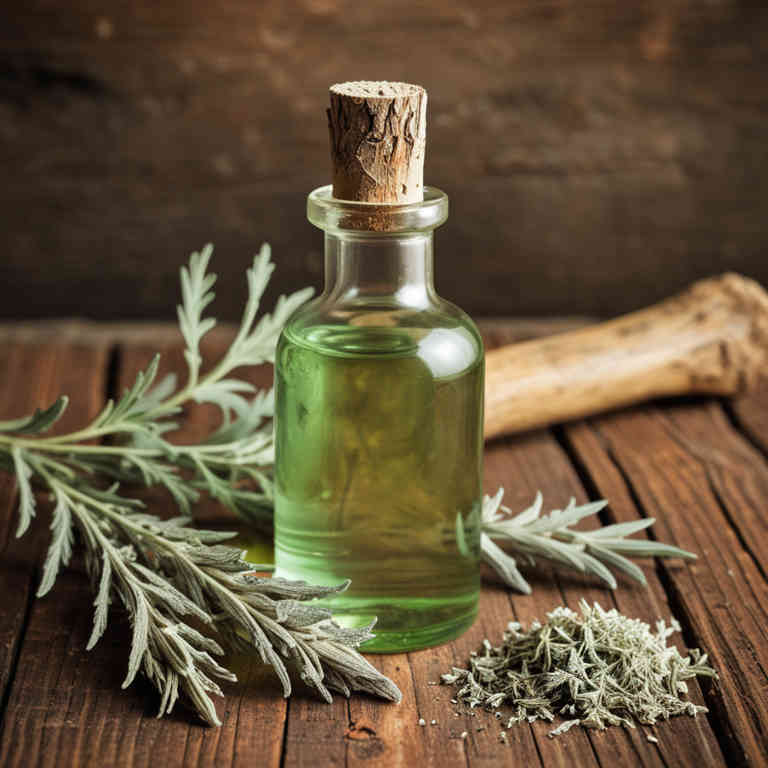Artemisia absinthium essential oil for medicinal use

Artemisia absinthium essential oil is a potent distillation of the flowering tops of the wormwood plant, known for its strong, bitter aroma and high concentration of compounds like thujone.
It has been historically used in herbalism for its antiparasitic, antiseptic, and digestive properties. This oil is often diluted and applied topically to treat skin infections or used in aromatherapy to support mental clarity and reduce anxiety. It is also traditionally used in the preparation of absinthe, though its medicinal applications are more focused on internal and external healing.
Due to its potency, it should be used with caution and under the guidance of a qualified herbalist.
Uses
Artemisia absinthium essential oil has been used to treat various ailments for centuries, with a rich history dating back to ancient civilizations.
Traditionally, it was employed in herbal medicine for its purported ability to alleviate digestive issues, fever, and parasitic infections. In modern times, it is valued for its potential antimicrobial, anti-inflammatory, and antispasmodic properties, often used in aromatherapy and natural remedies. However, due to its potency, it is typically diluted before use to avoid skin irritation or toxicity.
Its historical significance and continued use in alternative medicine highlight its enduring role in herbal practices.
Benefits
Artemisia absinthium essential oil has health benefits such as antimicrobial, anti-inflammatory, and antioxidant properties.
It is traditionally used to support digestive health and may help alleviate symptoms of indigestion and bloating. This essential oil is also known for its potential to aid in respiratory conditions due to its expectorant qualities. Additionally, it may have calming effects and is sometimes used in aromatherapy to reduce stress and anxiety.
However, it should be used with caution and under professional guidance due to its potency.
Constituents
Artemisia absinthium essential oil active constituents include compounds such as thujone, camphor, and cineole, which contribute to its distinctive aroma and therapeutic properties.
Thujone is known for its potential cognitive and stimulant effects, while camphor exhibits antimicrobial and anti-inflammatory properties. Cineole may support respiratory health and aid in digestion. These compounds work synergistically to provide various health benefits, including supporting immune function and promoting mental clarity.
However, due to the presence of thujone, it should be used with caution and under professional guidance.
Preparation
To make Artemisia absinthium essential oil, start by harvesting fresh or dried leaves and flowers of the plant during its flowering period.
Place the plant material in a glass jar and cover it completely with a high-quality carrier oil, such as jojoba or almond oil. Let the mixture infuse in a cool, dark place for 4 to 6 weeks, shaking the jar gently every few days. After the infusion period, strain the oil through a fine mesh or cheesecloth to remove the plant material.
Store the essential oil in a dark glass bottle away from direct sunlight to preserve its potency.
Side Effects
Artemisia absinthium essential oil may lead to liver toxicity, gastrointestinal upset, and increased sensitivity to sunlight.
It is derived from the wormwood plant and is known for its strong, bitter aroma and historical use in absinthe. Due to its high concentration of compounds like thujone, it can be toxic if ingested in large amounts or over prolonged periods. Possible side effects include nausea, vomiting, headaches, and in severe cases, liver damage.
It is important to use this essential oil with caution and consult a healthcare professional before use.